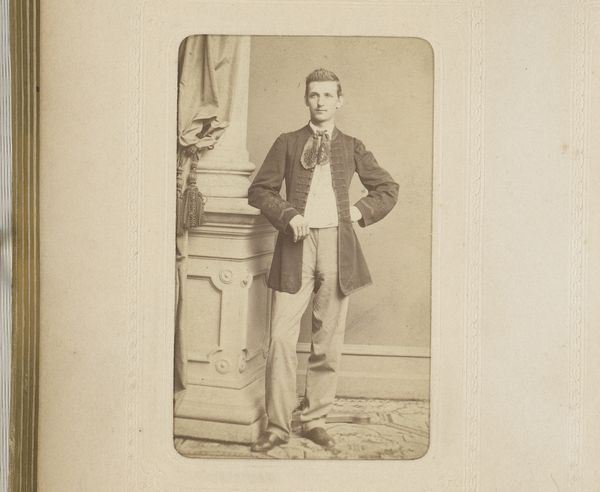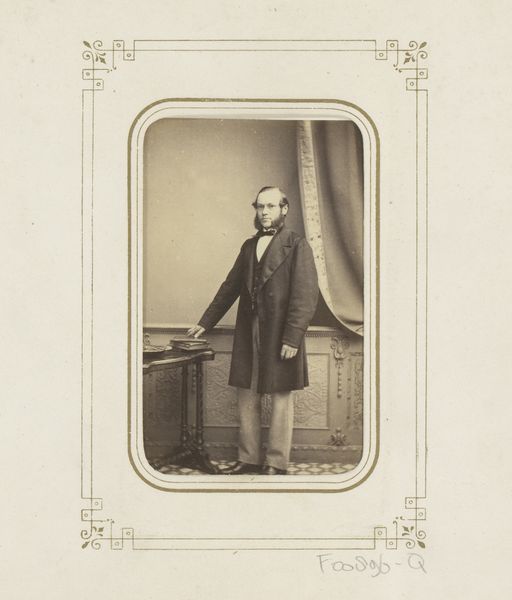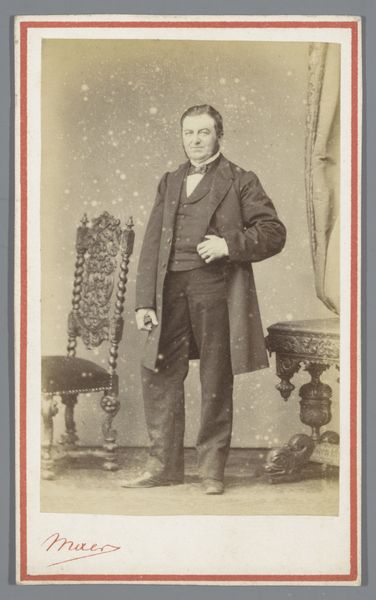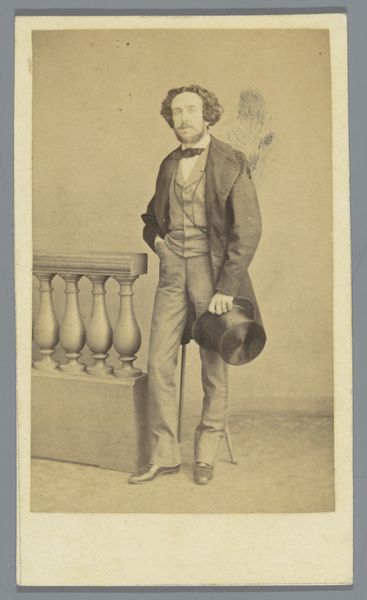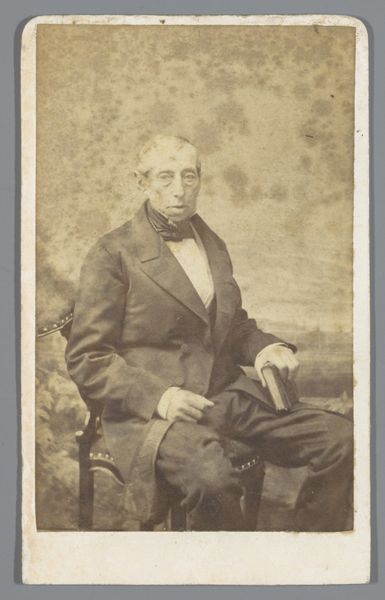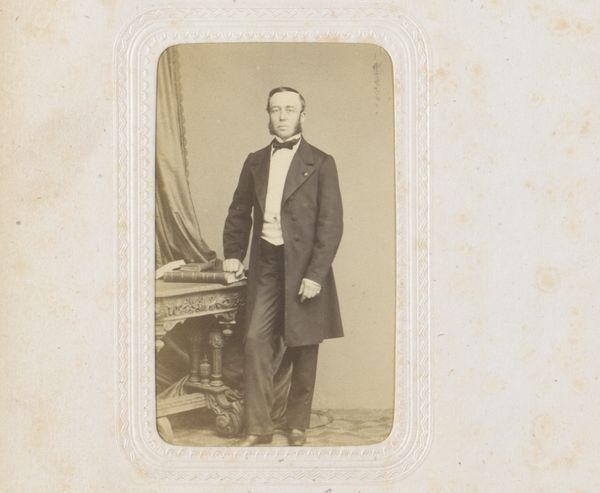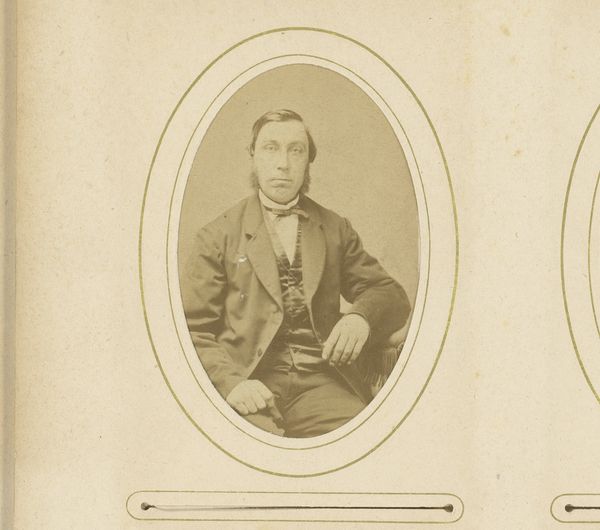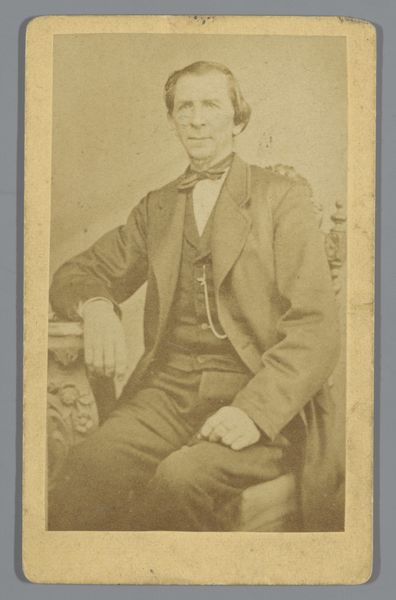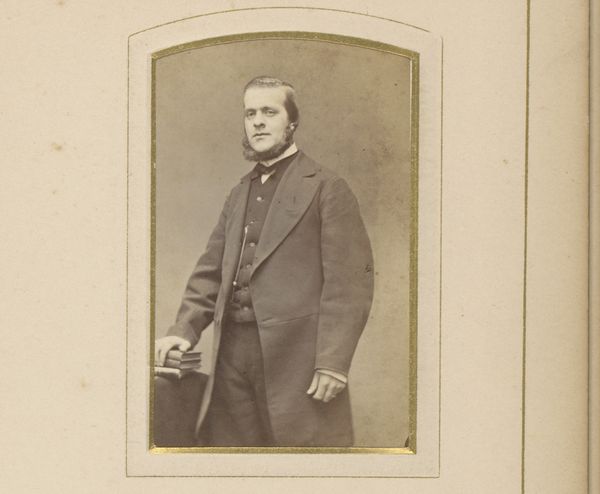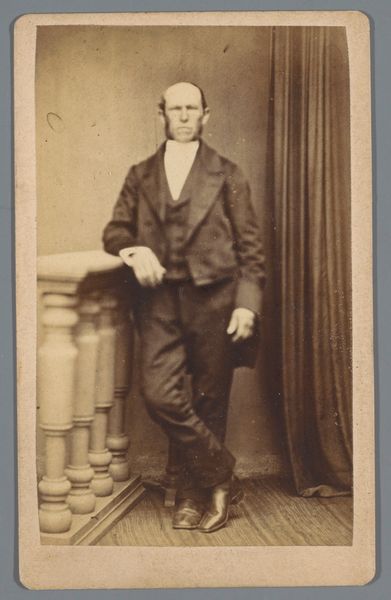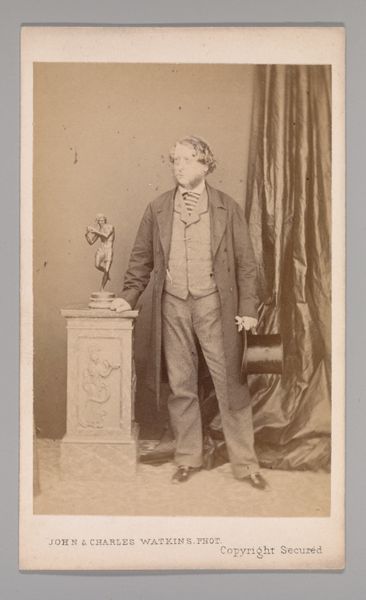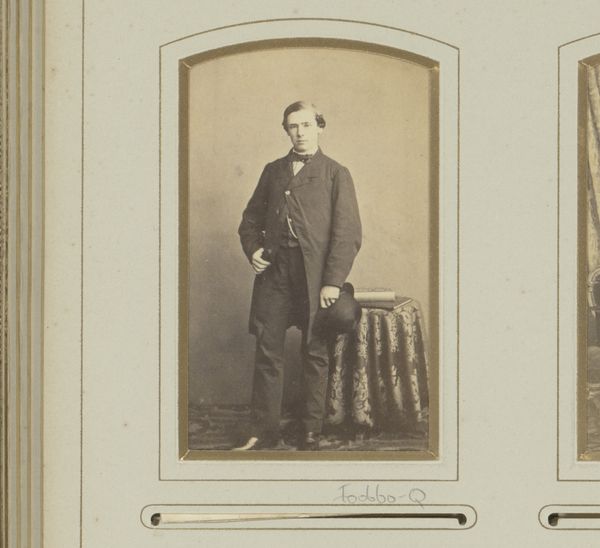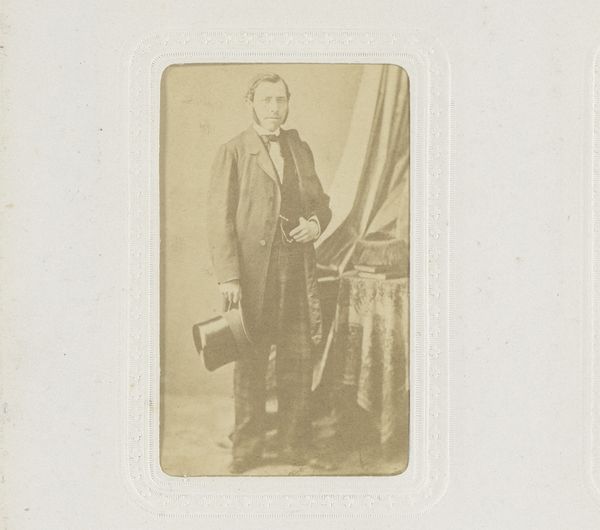
photography, gelatin-silver-print
#
photography
#
gelatin-silver-print
#
watercolor
#
realism
Dimensions: height 106 mm, width 61 mm
Copyright: Rijks Museum: Open Domain
Editor: Here we have a gelatin-silver print titled "Portrait of an Unknown Man" from somewhere between 1855 and 1885, credited to Ch. Verbeke-Schodts. The photo has a certain stiffness to it, and it makes me wonder about the sitter’s social position. How do you interpret this work, especially considering the period it was created in? Curator: What strikes me is precisely that "unknown" aspect. Photographic portraits were becoming more accessible, but the performative act of posing still held significance, especially in negotiating class and identity. The staging – the draped curtain, the chair – are all deliberate attempts to project a certain image. Does the stiffness, as you put it, betray anxieties about conforming to societal expectations, or is it a marker of bourgeois respectability? Consider what it meant to control your image and present it for posterity at this historical juncture. Editor: So you’re saying that what seems like a simple portrait is actually loaded with social and political meaning? Curator: Absolutely. Think about the power dynamics at play. Who has the privilege of being seen, of having their image circulated? And how is that image then used and interpreted? The man’s anonymity becomes a focal point for examining representation itself. What can a portrait tell us about someone we'll never know? And who are we, looking back at him, through a present-day lens? How do you see this portrait functioning within broader histories of power and representation? Editor: That makes me think about how differently we approach portraiture today. It’s almost as if we expect a sense of intimacy or authenticity that wouldn’t even have been a concern then. Curator: Precisely! His very distance challenges our contemporary notions of self-expression and highlights the constructed nature of identity. Editor: I never thought I could read so much into a face. I’ll certainly never look at an old photograph the same way again. Curator: And hopefully, that expanded view of art will carry over to how you interpret everything.
Comments
No comments
Be the first to comment and join the conversation on the ultimate creative platform.

